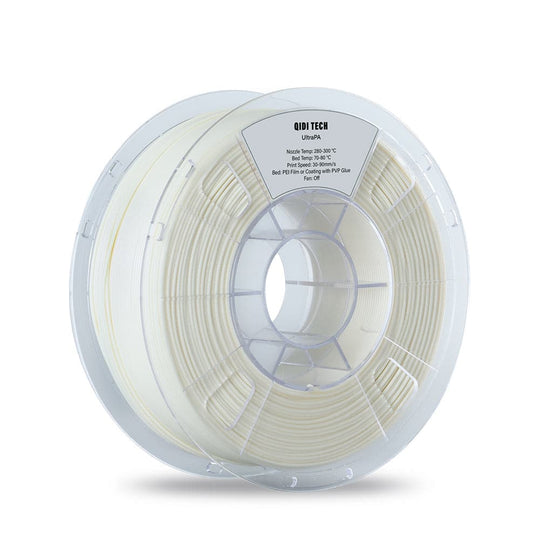Unlock the Secrets to Superior 3D Printing: Discover the Game-Changing Materials Everyone is Talking About!
Unlock the Secrets to Superior 3D Printing: Discover the Game-Changing Materials Everyone is Talking About!
In recent years, 3D printing has transitioned from a niche technology to a transformative force across various industries, including healthcare, automotive, and consumer goods. As this innovative manufacturing process gains traction, understanding the materials that drive it becomes increasingly essential. The use of superior quality materials in 3D printing can significantly influence the performance, durability, and aesthetic of the final product. This article will delve into the different materials that can elevate your 3D printing experience, showcasing their unique properties and applications. Prepare to explore how the right choice of material can unlock new possibilities in your projects.

Understanding 3D Printing Materials
3D printing materials can be broadly categorized into several types, each with distinct properties and uses. Plastics dominate the field, with materials like PLA (Polylactic Acid) and ABS (Acrylonitrile Butadiene Styrene) being favorites among hobbyists and professionals alike. PLA is known for its ease of use and environmental friendliness, making it a popular choice for beginners. On the other hand, ABS offers higher strength and heat resistance, making it suitable for functional prototypes and end-use parts. Beyond plastics, metals such as titanium and aluminum are increasingly being used in industrial applications, providing unmatched strength and durability. Composites, which combine two or more materials, are also gaining popularity for their enhanced properties, allowing for creative solutions in complex printing tasks. Understanding these materials is crucial for selecting the right one for your specific application.
Key Characteristics of Superior Quality 3D Printing Materials
When it comes to superior quality 3D printing materials, several key characteristics come into play. Strength is paramount; a material’s ability to withstand stress and strain is critical, especially for functional parts. Durability is another essential quality, as it determines how well the printed object can endure wear and tear over time. Flexibility is also significant—certain applications require materials that can bend without breaking, such as in the automotive and wearable tech sectors. Finally, ease of use is crucial for a smooth printing experience; materials that adhere well to the print bed and maintain consistent flow through the nozzle can greatly reduce the likelihood of print failures. These characteristics not only affect the performance of the printed objects but also influence the overall satisfaction of the printing process.
Top Materials for Superior 3D Printing
Several materials stand out in the realm of 3D printing due to their exceptional performance and versatility. PLA is often the first choice for beginners, thanks to its low printing temperature and minimal warping. However, for applications requiring greater strength, ABS is the go-to option, despite its more challenging printing conditions. PETG (Polyethylene Terephthalate Glycol-Modified) combines the best features of both PLA and ABS, offering good strength and flexibility while being easier to print than ABS. Nylon is favored for its toughness and flexibility, ideal for functional parts that need to withstand impact. Lastly, TPU (Thermoplastic Polyurethane) is renowned for its rubber-like properties, making it perfect for projects that require elasticity and durability. Each of these materials has its pros and cons, and understanding them can help you make informed decisions for your projects.
Choosing the Right Material for Your Project
Selecting the right 3D printing material can be a daunting task, but considering specific project requirements can simplify the process. Begin by assessing the strength needed for your part; if it will face significant mechanical stress, opt for materials like ABS or Nylon. Next, consider the flexibility required; if your design includes moving parts or needs to bend, TPU might be a better choice. Additionally, think about the desired finish quality—some materials lend themselves to smoother finishes than others. Environmental considerations are also crucial; if sustainability is a priority, materials like PLA can offer a more eco-friendly solution. By weighing these factors carefully, you can choose a material that not only meets your functional needs but also enhances the overall quality of your 3D prints.
Final Thoughts on Material Selection
In conclusion, the choice of superior quality 3D printing materials can dramatically affect the outcome of your projects. By understanding the various types of materials available, their key characteristics, and the specific use cases for each, you can make informed decisions that lead to successful prints. As the 3D printing landscape continues to evolve, staying informed about material advancements will help you harness the full potential of this technology. Whether you are a hobbyist or a professional, the right material can make all the difference in achieving your creative and functional goals.
- Ausbildung
- Kurs
- Books
- Drawing
- Fragen
- Film
- Fitness
- Food
- Spiele
- Gardening
- Health
- Startseite
- Literature
- Music
- Networking
- Andere
- Programming
- Religion
- Shopping
- Sports
- Curriculm
- Wellness


